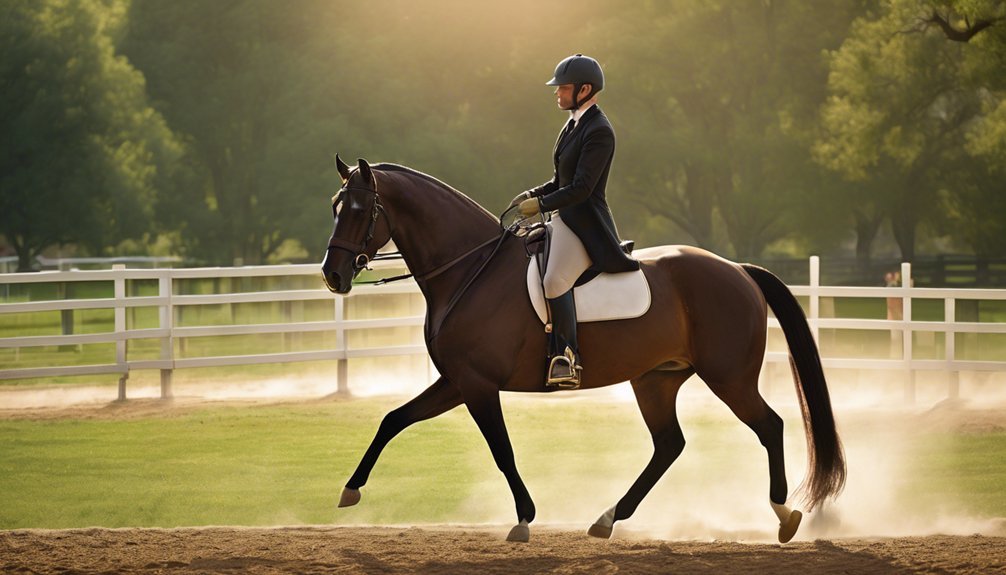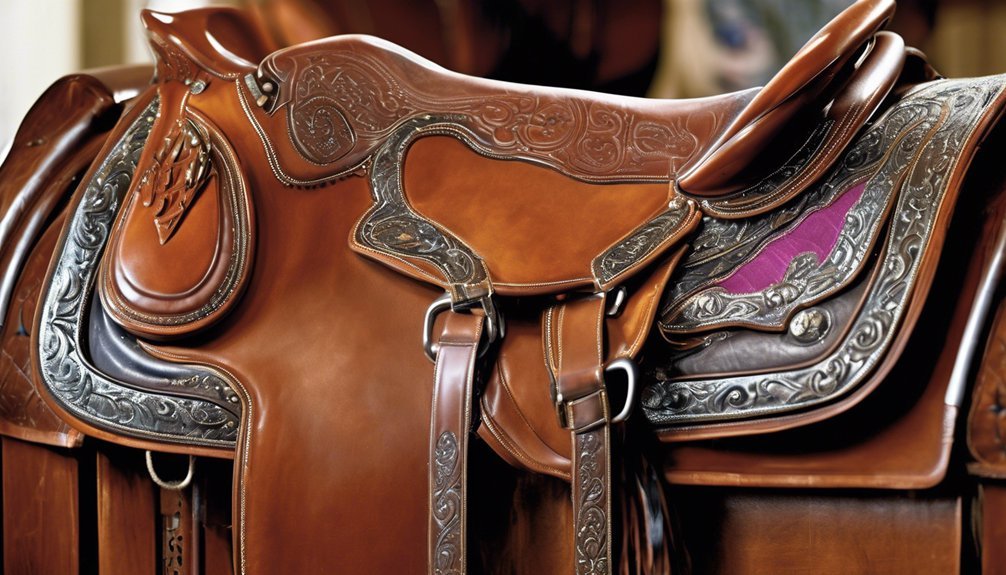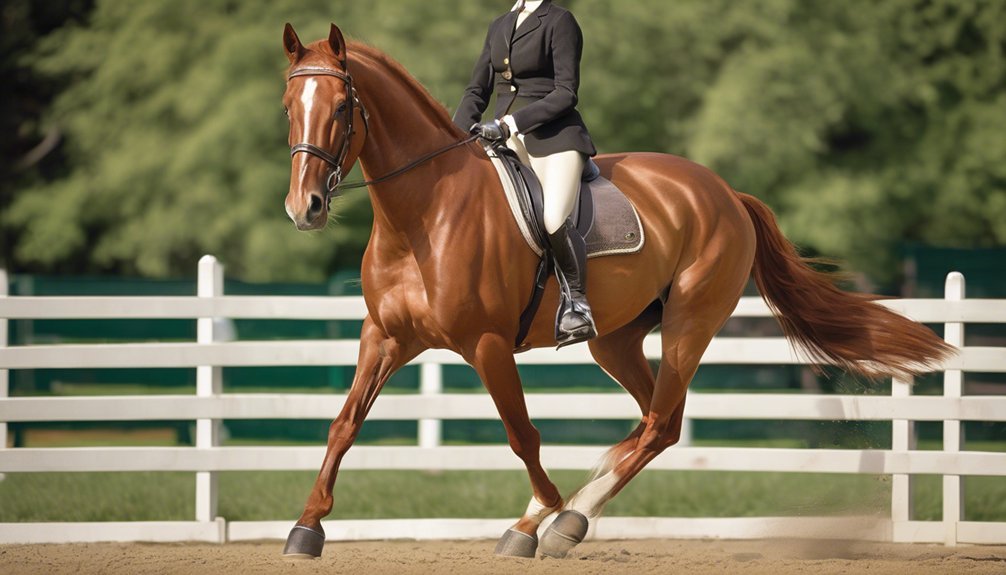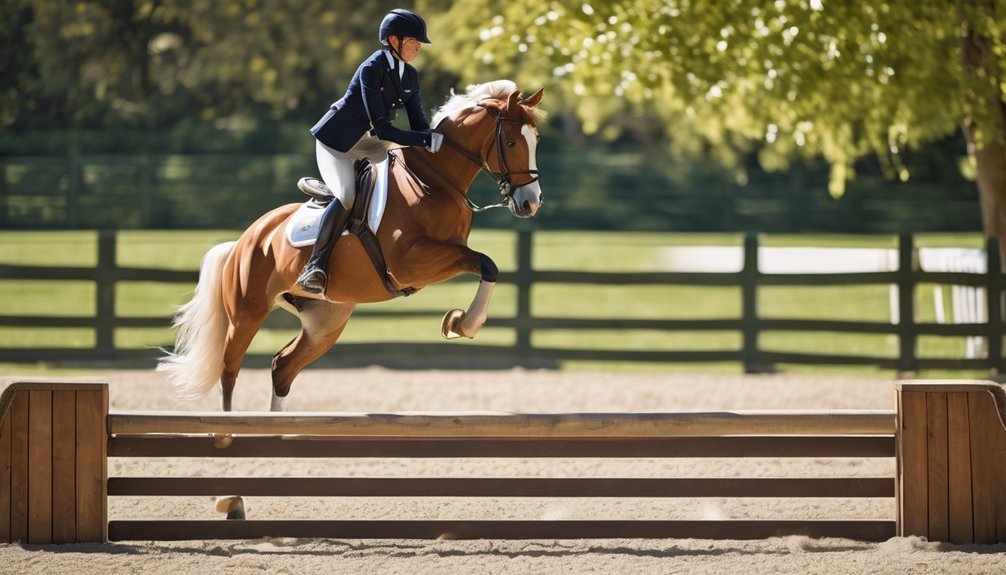
It's interesting how many riders discover a passion for eventing by chance, often starting with one phase before exploring the others. Each phase—dressage, cross-country, and show jumping—offers unique challenges and opportunities for growth. Understanding these elements not only enhances your skills but also strengthens your bond with your horse. So, what does it take to master each phase and excel in this multifaceted sport? Let's explore the intricacies of eventing together.
Key Takeaways
- Eventing consists of three distinct phases: dressage, cross-country, and show jumping, each testing different skills and partnerships between horse and rider.
- The dressage phase emphasizes harmony and precision, setting the tone for the competition through effective communication and mastery of movements.
- Cross-country tests stamina and strategy as riders navigate varied terrain and obstacles, fostering teamwork and adaptability with their horses.
- Show jumping focuses on accuracy and timing within a controlled arena, where obstacles challenge the rider's navigation skills and partnership with the horse.
- Each phase requires dedicated training, safety measures, and a supportive community to enhance the overall experience of eventing participants.
What Is Eventing?
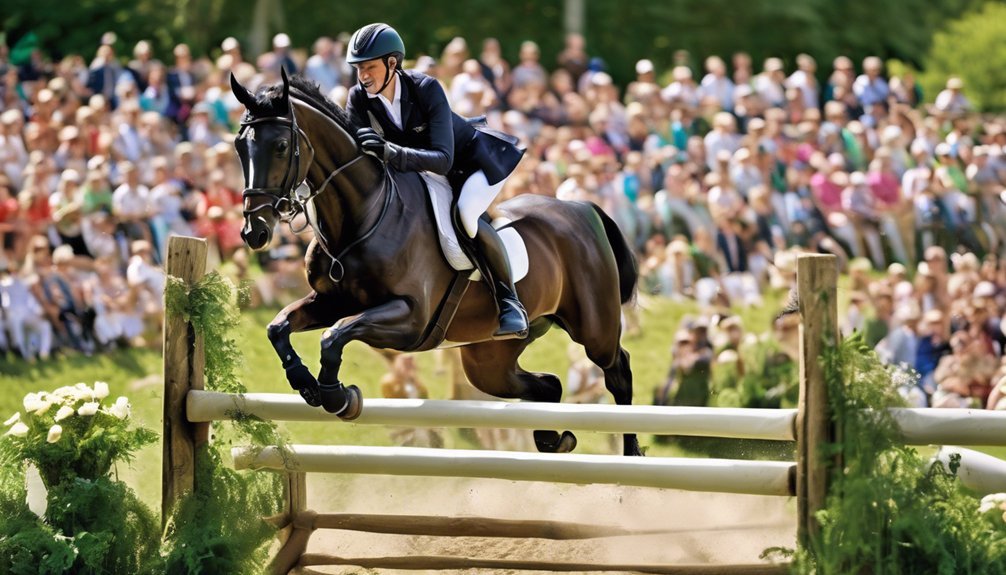
Eventing is an exhilarating equestrian sport that combines dressage, cross-country, and show jumping into one thrilling competition. This sport has a rich eventing history, tracing back to military training in the early 20th century.
It evolved to showcase a horse and rider's versatility across different eventing disciplines. In the dressage phase, precision and grace are tested, while cross-country challenges endurance and bravery over varied terrain.
Finally, show jumping examines agility and accuracy in a controlled arena. Each phase not only highlights the unique skills required but also fosters a strong bond between horse and rider.
As you dive into eventing, you'll discover a community that values teamwork, respect, and shared passion for this captivating sport.
The Dressage Phase Explained
While many might think of dressage as merely a showcase of elegant movements, it's actually the foundation of eventing that sets the tone for the entire competition. Understanding the dressage basics is essential for both you and your horse. This phase emphasizes harmony, precision, and effective horse communication, crucial for building a strong partnership.
Here's a look at the emotional connection created through dressage:
| Emotion | Expression | Impact |
|---|---|---|
| Calmness | Fluid movements | Establishes trust |
| Confidence | Strong posture | Inspires performance |
| Connection | Synchronization with horse | Fosters teamwork |
| Focus | Attentiveness to commands | Enhances clarity of communication |
| Joy | Radiant interactions | Celebrates the journey together |
In this phase, you're not just competing; you're bonding.
Key Components of Dressage
Understanding the key components of dressage is crucial for any rider looking to excel in eventing. At its core, dressage focuses on the relationship between you and your horse, emphasizing rider harmony.
Mastering various dressage movements, such as the trot, canter, and lateral work, allows you to communicate effectively with your horse, enhancing your performance. Each movement should flow seamlessly, showcasing your horse's natural abilities while reflecting your skill as a rider.
Consistency and precision are vital; they build trust and confidence in the partnership. As you develop a deep understanding of these components, you'll not only improve your dressage scores but also strengthen your bond with your horse, creating a fulfilling experience for both of you.
The Cross-Country Phase Overview
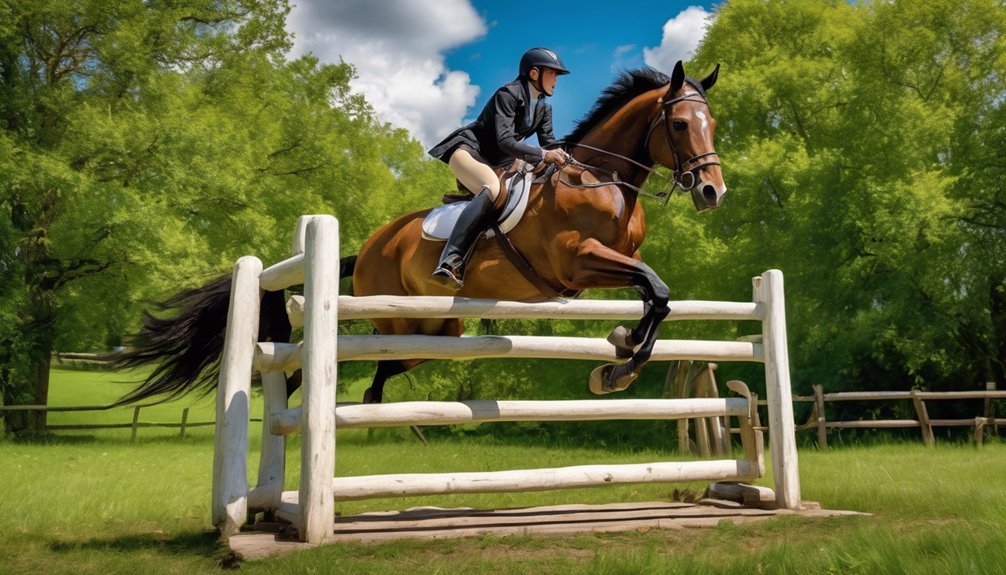
After honing your dressage skills and establishing a solid connection with your horse, you'll encounter the exhilarating cross-country phase of eventing.
This phase is all about testing your teamwork, stamina, and strategy as you tackle a series of cross-country obstacles spread across varied terrain. You'll experience the thrill of galloping through fields, navigating ditches, and jumping logs, all while maintaining your focus and rhythm.
It's essential to read the terrain carefully; knowing when to accelerate or slow down can make all the difference. Embrace the unpredictability of the course, as each ride brings its own challenges.
Challenges of Cross-Country
Cross-country presents a unique set of challenges that can test even the most seasoned riders.
You'll need to master terrain navigation, as each course varies in its landscape, from rolling hills to dense woods. Understanding how to read the ground can make a significant difference in your performance.
Moreover, the obstacle diversity in cross-country demands adaptability; you'll encounter everything from ditches to water jumps. Each obstacle requires a different approach and technique, pushing you to think on your feet.
As you tackle these challenges, embracing the unpredictability can foster a deeper bond with your horse.
The Show Jumping Phase
As you move from the unpredictable terrain of cross-country to the precision required in show jumping, you'll find a different set of skills coming into play. Show jumping focuses on accuracy and timing, demanding a strategic partnership between you and your horse. Understanding course design is crucial, as it presents a series of obstacles that test your ability to navigate with finesse.
Here's a breakdown of key aspects to consider:
| Aspect | Importance | Tip |
|---|---|---|
| Show Jumping Techniques | Enhance performance | Practice different styles |
| Course Design | Develops strategy | Analyze each jump |
| Timing | Crucial for success | Rhythm is everything |
| Communication | Strengthens bond | Use subtle cues |
| Warm-Up | Prepares horse | Keep it focused |
Embrace this challenge, and enjoy the journey!
Techniques for Successful Show Jumping

While mastering show jumping requires dedication and practice, employing specific techniques can significantly enhance your performance.
To improve your show jumping techniques and course strategy, consider the following:
- Focus on Rhythm: Maintain a consistent rhythm while approaching jumps. This helps you and your horse feel more in sync, boosting confidence and accuracy.
- Use Your Eyes: Always look ahead to the next jump. This allows you to plan your approach and adjust your pace, ensuring smoother transitions.
- Practice Turns: Sharpen your ability to navigate tight turns. Efficient turns can save precious time and keep your momentum up.
Scoring in Eventing
Understanding scoring in eventing is crucial for any competitor aiming for success. The scoring system operates on a point-based format, where lower scores are better.
You accumulate penalty points across three phases: dressage, cross-country, and show jumping. In dressage, penalties arise from mistakes like incorrect gaits or movements. During cross-country, you face penalties for time faults and refusals. Show jumping adds penalties for knockdowns and time errors.
Each phase's penalties are summed to determine your final score, so it's vital to manage your performance carefully. Familiarizing yourself with this system not only helps you strategize but also boosts your confidence.
Training for Each Phase
To excel in eventing, you need a focused training regimen for each phase—dressage, cross-country, and show jumping.
Each phase requires unique conditioning exercises and phase-specific drills to develop your horse's skills and your partnership. Here's how to structure your training:
- Dressage: Focus on flexibility and balance through lateral movements and transitions. Incorporate grid work to enhance rhythm.
- Cross-Country: Build stamina with long-distance conditioning and practice galloping over varied terrains. Include jumping drills to improve technique and confidence.
- Show Jumping: Work on precision with bounce exercises and tight turns. Use pole work to refine your horse's footwork.
The Importance of Safety in Eventing
As you hone your skills in each phase of eventing, safety must remain a top priority throughout your training and competitions.
Investing in proper safety equipment, like helmets and body protectors, is essential for every rider. Familiarizing yourself with emergency protocols ensures you can respond effectively in unexpected situations, fostering a sense of security within your riding community.
Additionally, engaging in risk management practices helps you identify potential hazards before they become issues. Prioritizing rider education not only enhances your skills but also promotes a culture of safety among your peers.
Embrace these principles, and you'll not only protect yourself but also contribute to a supportive environment where everyone can thrive in the exhilarating world of eventing.
Frequently Asked Questions
How Are Eventing Competitions Structured and Scheduled?
Eventing competitions are structured around various competition formats, often including dressage, cross-country, and show jumping. You'll find scheduling strategies that optimize participant engagement, ensuring everyone feels included and excited about the challenges ahead.
What Types of Horses Excel in Eventing?
Picture a powerful Thoroughbred galloping through fields or a graceful Warmblood soaring over fences. These horse types excel in eventing, combining speed, agility, and temperament, making them ideal partners for your thrilling equestrian journey.
How Do Weather Conditions Affect Eventing Performance?
Weather conditions can significantly affect your eventing performance. High temperatures can tire your horse quickly, while rain impacts traction and visibility. Understanding these factors helps you prepare better and ensures a smoother experience for both you and your horse.
What Is the History of Eventing as a Sport?
Eventing's got ancient origins, tracing back to knights showcasing their equestrian skills. As you witness its evolution, you'll see how this thrilling sport combines tradition and modernity, bringing together passionate horse lovers like you from around the world.
Are There Different Levels of Eventing Competitions?
Yes, there are various eventing levels, each designed for different skill sets. You'll find competition formats ranging from beginner to advanced, allowing everyone to participate, improve, and belong within this vibrant equestrian community.
Conclusion
In the thrilling world of eventing, you and your horse embark on a journey that weaves together precision, stamina, and agility. Like a finely tuned symphony, each phase harmonizes to showcase your bond and skills. Embracing the challenges of dressage, cross-country, and show jumping not only sharpens your abilities but also deepens your connection with your horse. So saddle up, keep your spirit high, and let the adventure of eventing unfold—each ride is a story waiting to be told.



